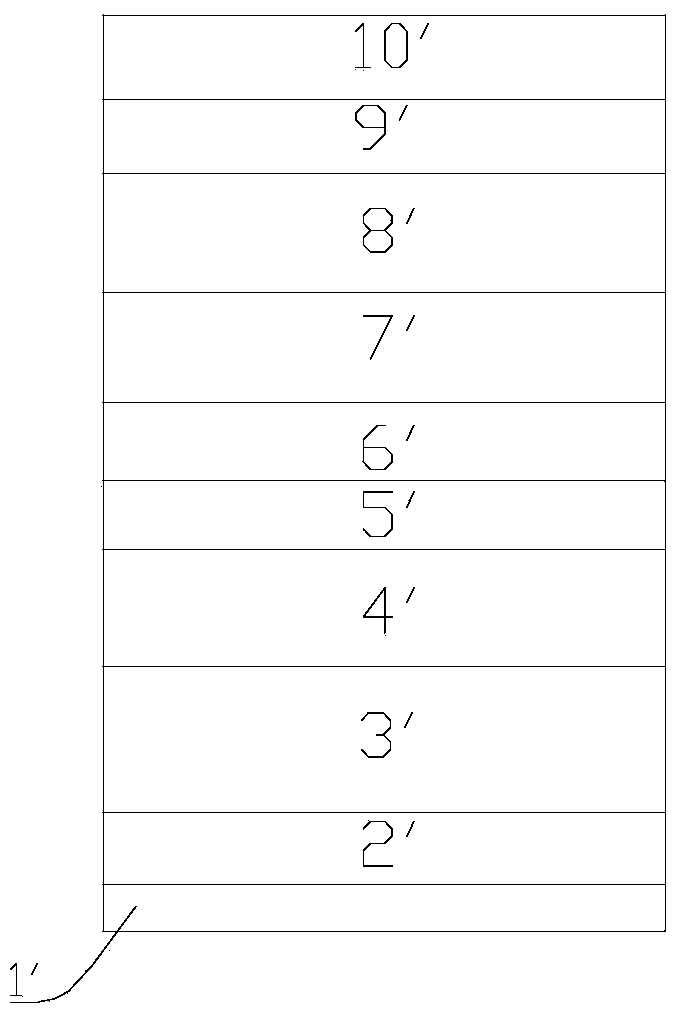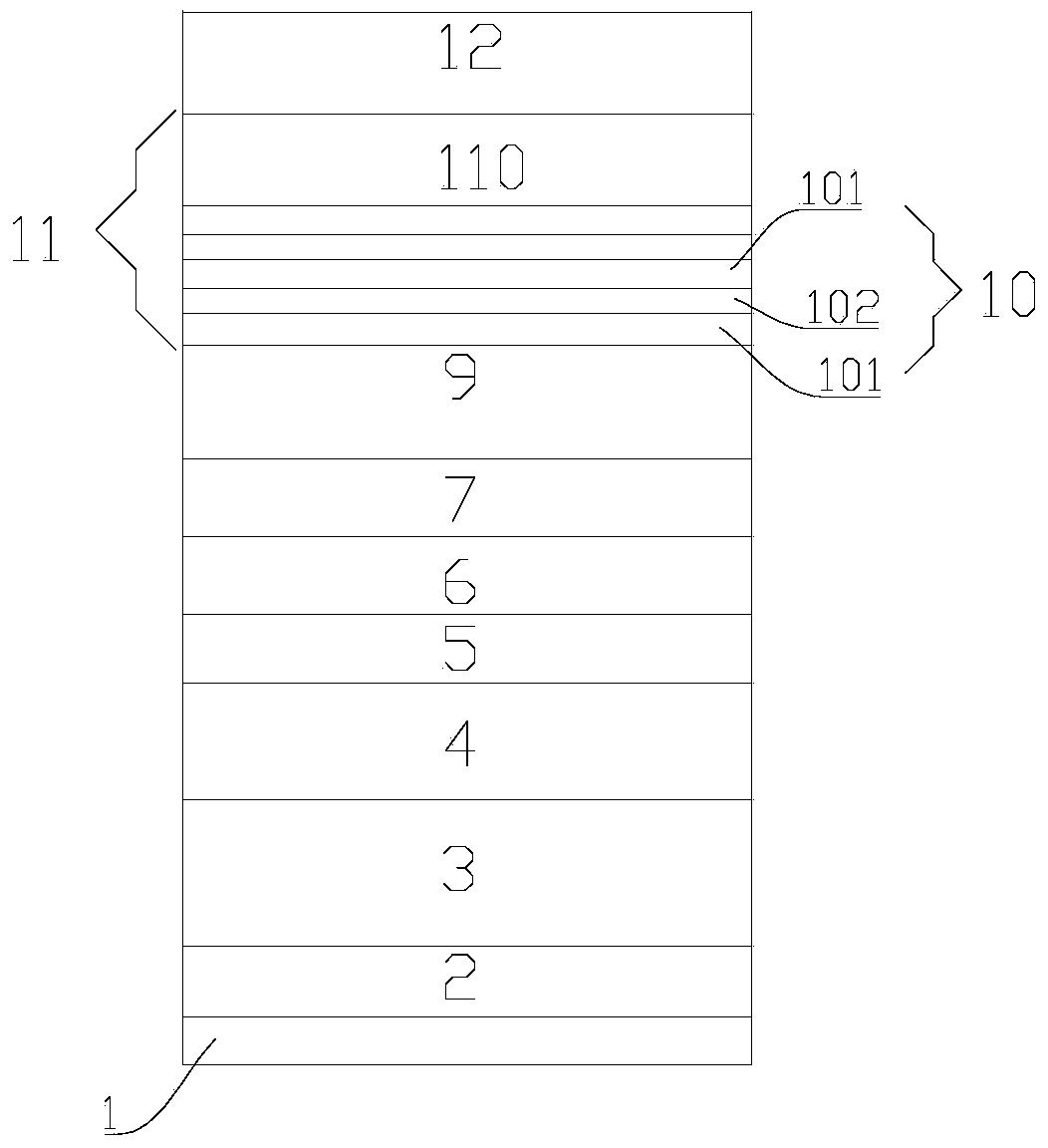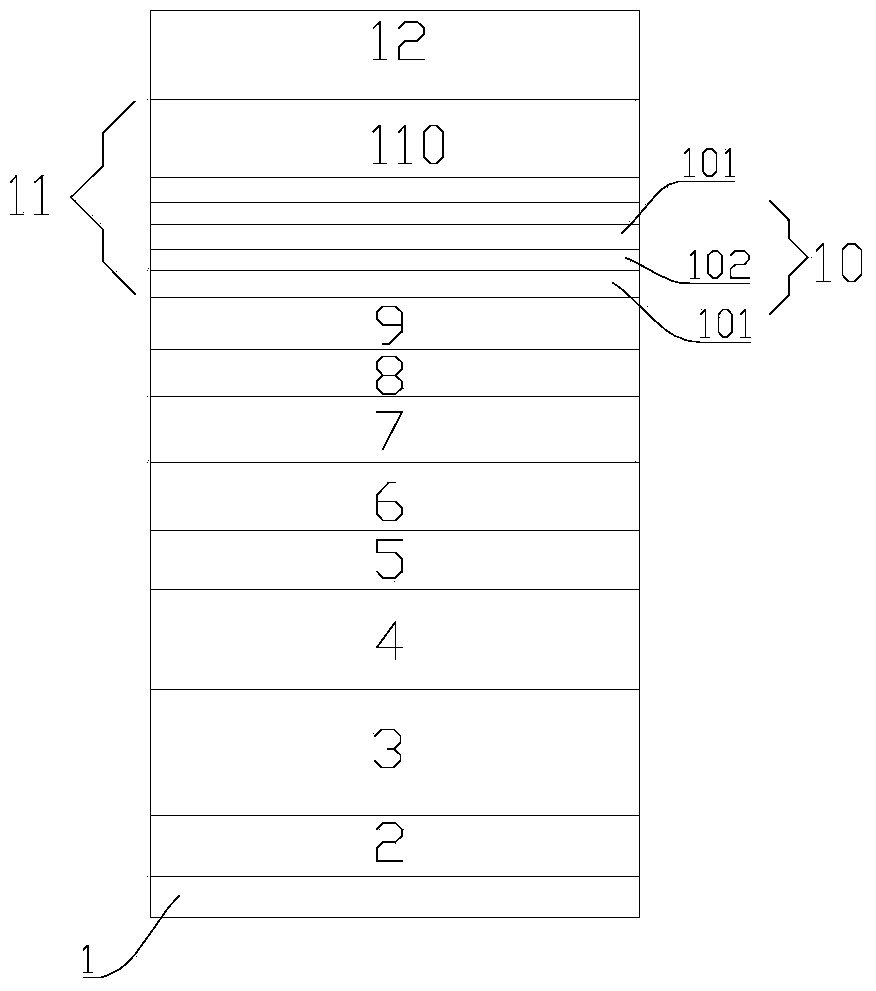Light-emitting diode (LED) epitaxial layer structure and LED chip with same
A technology of epitaxial layer and structural unit, which is applied in the direction of electrical components, circuits, semiconductor devices, etc., can solve problems such as MQW layer damage, and achieve the effects of improving bonding efficiency, improving mobility, and increasing recombination efficiency
- Summary
- Abstract
- Description
- Claims
- Application Information
AI Technical Summary
Problems solved by technology
Method used
Image
Examples
preparation example Construction
[0049] The LED epitaxial layer preparation method provided by the present invention comprises the following steps:
[0050] The following growth processes are carried out in MOCVD equipment by MOCVD method.
[0051] 1. Place the sapphire substrate 1 in the MOCVD reaction chamber, and use H 2 , NH 3 Wait for the gas to treat the sapphire substrate 1 for 4 to 10 minutes;
[0052] 2. After the treatment is completed, the temperature of the reaction chamber is lowered to 500-650°C, the optimum temperature is 550°C, and TMGa and NH 3 , the pressure is 300-900mbar, and a GaN buffer layer 2 (Nucleation) with a thickness of 20-50nm is grown on the sapphire substrate 1;
[0053] 3. After the GaN buffer layer 2 is grown, the temperature is raised to 950-1100° C., annealed for 60-300 s, and a GaN crystal nucleus is formed on the substrate 1;
[0054] 4. After the annealing is completed, the temperature is adjusted to 950-1050°C, and TMGa and NH 3 , with a pressure of 300-900mbar, gr...
Embodiment 1
[0070] 1. Place the sapphire substrate 1 in the MOCVD reaction chamber, at a temperature of 1000°C, use H 2 , NH 3 Wait for gas treatment for 4 minutes for sapphire substrate 1;
[0071] 2. After the treatment is completed, the temperature of the reaction chamber is lowered to within 500°C, and TMGa and NH are introduced 3 , the pressure is 300mbar, and a GaN buffer layer 2 (Nucleation) with a thickness of 20nm is grown on the sapphire substrate 1;
[0072] 3. After growing the GaN buffer layer 2, raise the temperature to 950°C and anneal for 60s to form a GaN crystal nucleus on the substrate 1;
[0073] 4. After the annealing is completed, the temperature is adjusted to 950°C, and TMGa and NH are introduced 3 , the pressure is 300mbar, and the first u-GaN layer 3 with a thickness of 0.8um is grown on the GaN buffer layer 2;
[0074] 5. Then raise the temperature to 1000° C. and the pressure to 300 mbar, and grow the second u-GaN layer 4 with a thickness of 2 μm.
[0075]...
Embodiment 2
[0085] 1. Place the sapphire substrate 1 in the MOCVD reaction chamber, at a temperature of 1100°C, use H 2 , NH 3 Wait for the gas to treat the sapphire substrate 1 for 10 minutes;
[0086] 2. After the treatment is completed, the temperature of the reaction chamber is lowered to within 650°C, and TMGa and NH are introduced 3 , the pressure is 900mbar, and a GaN buffer layer 2 (Nucleation) with a thickness of 50nm is grown on the sapphire substrate 1;
[0087] 3. After growing the GaN buffer layer 2, raise the temperature to 1100°C and anneal for 300s to form a GaN crystal nucleus on the substrate 1;
[0088] 4. After the annealing is completed, the temperature is adjusted to 1050°C, and TMGa and NH are introduced 3 , the pressure is 900mbar, and the first u-GaN layer 3 with a thickness of 1.5um is grown on the GaN buffer layer 2;
[0089] 5. The temperature is raised to 1100° C., the pressure is 900 mbar, and the second u-GaN layer 4 with a thickness of 3 μm is grown.
...
PUM
 Login to View More
Login to View More Abstract
Description
Claims
Application Information
 Login to View More
Login to View More - R&D
- Intellectual Property
- Life Sciences
- Materials
- Tech Scout
- Unparalleled Data Quality
- Higher Quality Content
- 60% Fewer Hallucinations
Browse by: Latest US Patents, China's latest patents, Technical Efficacy Thesaurus, Application Domain, Technology Topic, Popular Technical Reports.
© 2025 PatSnap. All rights reserved.Legal|Privacy policy|Modern Slavery Act Transparency Statement|Sitemap|About US| Contact US: help@patsnap.com



